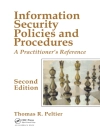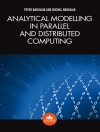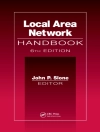This book is a concise one-stop desk reference and synopsis of basic knowledge and skills for Cisco certification prep. For beginning and experienced network engineers tasked with building LAN, WAN, and data center connections, this book lays out clear directions for installing, configuring, and troubleshooting networks with Cisco devices. The full range of certification topics is covered, including all aspects of IOS, NX-OS, and ASA software. The emphasis throughout is on solving the real-world challenges engineers face in configuring network devices, rather than on exhaustive descriptions of hardware features.
This practical desk companion doubles as a comprehensive overview of the basic knowledge and skills needed by CCENT, CCNA, and CCNP exam takers. It distills a comprehensive library of cheat sheets, lab configurations, and advanced commands that the authors assembled as senior network engineers for the benefit of junior engineers they train, mentor on the job, and prepare for Cisco certification exams. Prior familiarity with Cisco routing and switching is desirable but not necessary, as Chris Carthern, Dr. Will Wilson, Noel Rivera, and Richard Bedwell start their book with a review of the basics of configuring routers and switches. All the more advanced chapters have labs and exercises to reinforce the concepts learned.
This book differentiates itself from other Cisco books on the market by approaching network security from a hacker’s perspective. Not only does it provide network security recommendations but it teaches you how to use black-hat tools such as ocl Hashcat, Loki, Burp Suite, Scapy, Metasploit, and Kali to actually test the security concepts learned.
Readers of Cisco Networks will learn
- How to configure Cisco switches, routers, and data center devices in typical corporate network architectures
- The skills and knowledge needed to pass Cisco CCENT, CCNA, and CCNP certificationexams
- How to set up and configure at-home labs using virtual machines and lab exercises in the book to practice advanced Cisco commands
- How to implement networks of Cisco devices supporting WAN, LAN, and data center configurations
- How to implement secure network configurations and configure the Cisco ASA firewall
- How to use black-hat tools and network penetration techniques to test the security of your network
Table des matières
Chapter 1. Introduction to Practical Networking.- Chapter 2. The Physical Medium.- Chapter 3. Data Link Layer.- Chapter 4. The Network Layer with IP.- Chapter 5. Intermediate LAN Switching and More L2 Helper Protocols.- Chapter 6. Routing Protocols and Their Practical Implementation.- Chapter 7. VLANs and MSTP.- Chapter 8. Basic Switch and Router Troubleshooting.- Chapter 9. NAT/DHCP.- Chapter 10. Management Plane.- Chapter 11. Data Plane.- Chapter 12. Control Plane.- Chapter 13. Introduction to Availability.- Chapter 14. Advanced Switching.- Chapter 15. Advanced Routing.- Chapter 16. Advanced Security.- Chapter 17. Advanced Troubleshooting.- Chapter 18. Effective Network Management via Network Metadata and Correlation.- Chapter 19. Data Center.- Chapter 20. Wireless LAN.- Chapter 21. ASA and IDS.- Chapter 22. Network Penetration Testing.- Chapter 23. MPLS
A propos de l’auteur
Chris Carthern (CCNP, CISSP) is a senior network engineer for the United States Department of Defense. He is responsible for analyzing, designing, installing, configuring, maintaining, and repairing of Cisco network infrastructure and application components and for training and mentoring junior network engineers and preparing them for Cisco CCNP and CISSP certification exams. Carthern took his BS (honors) in computer science from Morehouse College and his MS in system engineering from the University of Maryland Baltimore County (UMBC). He holds the following certifications: Cisco Certified Network Professional (CCNP), Certified Information Systems Security Professional (CISSP), Comp TIA Security+, Brocade Certified Network Professional (BNCP), and ITIL v3.












